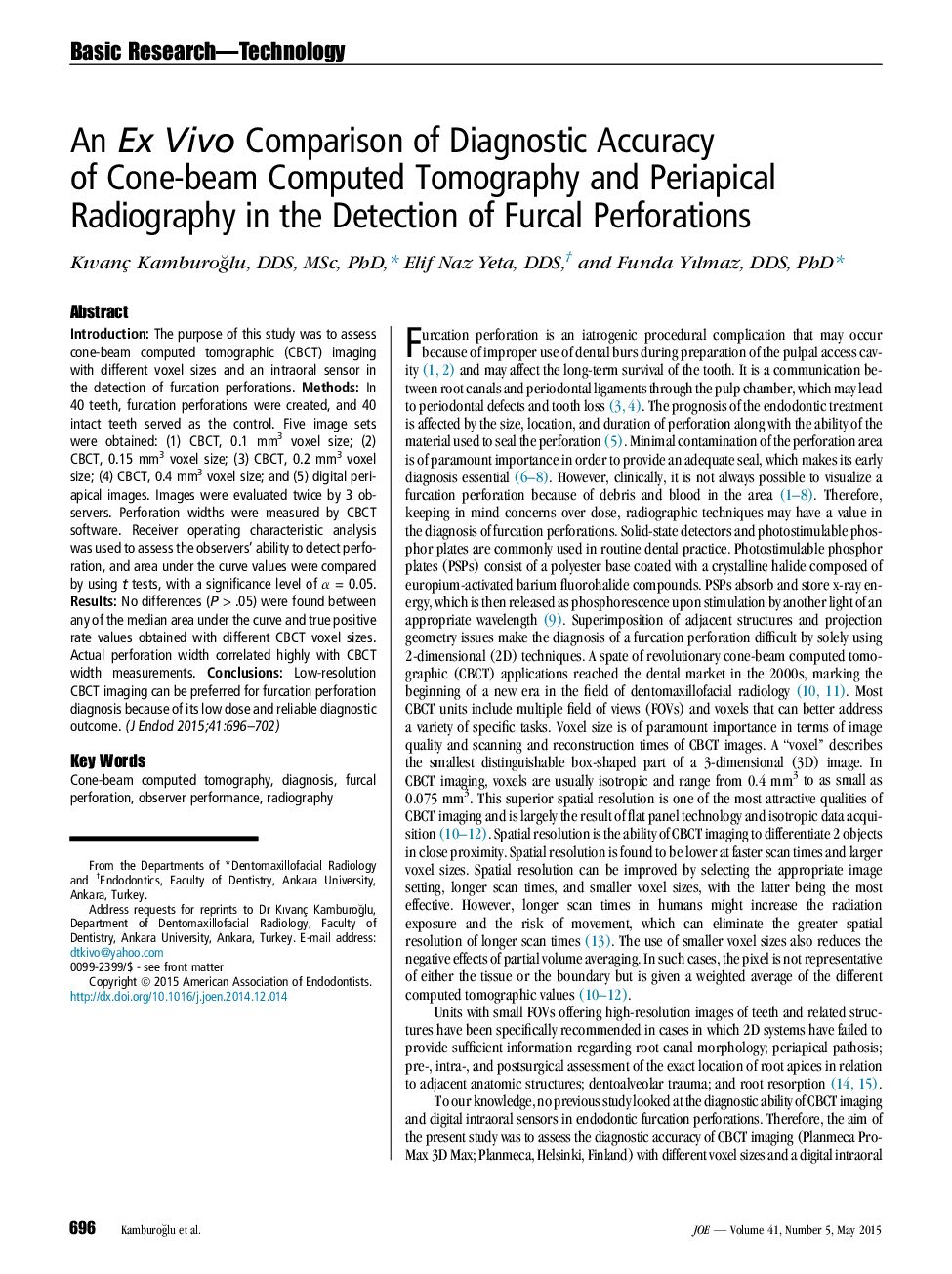| کد مقاله | کد نشریه | سال انتشار | مقاله انگلیسی | نسخه تمام متن |
|---|---|---|---|---|
| 3150294 | 1197507 | 2015 | 7 صفحه PDF | دانلود رایگان |

• We assessed cone-beam computed tomographic (CBCT) images with different voxel sizes and an intraoral sensor in the detection of endodontic furcation perforations.
• No differences were found between any of the CBCT voxel sizes.
• The actual perforation width correlated highly with CBCT width measurements.
• Low-resolution CBCT imaging can be preferred for furcation perforation diagnosis because of its low dose and reliable diagnostic outcome.
IntroductionThe purpose of this study was to assess cone-beam computed tomographic (CBCT) imaging with different voxel sizes and an intraoral sensor in the detection of furcation perforations.MethodsIn 40 teeth, furcation perforations were created, and 40 intact teeth served as the control. Five image sets were obtained: (1) CBCT, 0.1 mm3 voxel size; (2) CBCT, 0.15 mm3 voxel size; (3) CBCT, 0.2 mm3 voxel size; (4) CBCT, 0.4 mm3 voxel size; and (5) digital periapical images. Images were evaluated twice by 3 observers. Perforation widths were measured by CBCT software. Receiver operating characteristic analysis was used to assess the observers' ability to detect perforation, and area under the curve values were compared by using t tests, with a significance level of α = 0.05.ResultsNo differences (P > .05) were found between any of the median area under the curve and true positive rate values obtained with different CBCT voxel sizes. Actual perforation width correlated highly with CBCT width measurements.ConclusionsLow-resolution CBCT imaging can be preferred for furcation perforation diagnosis because of its low dose and reliable diagnostic outcome.
Journal: Journal of Endodontics - Volume 41, Issue 5, May 2015, Pages 696–702